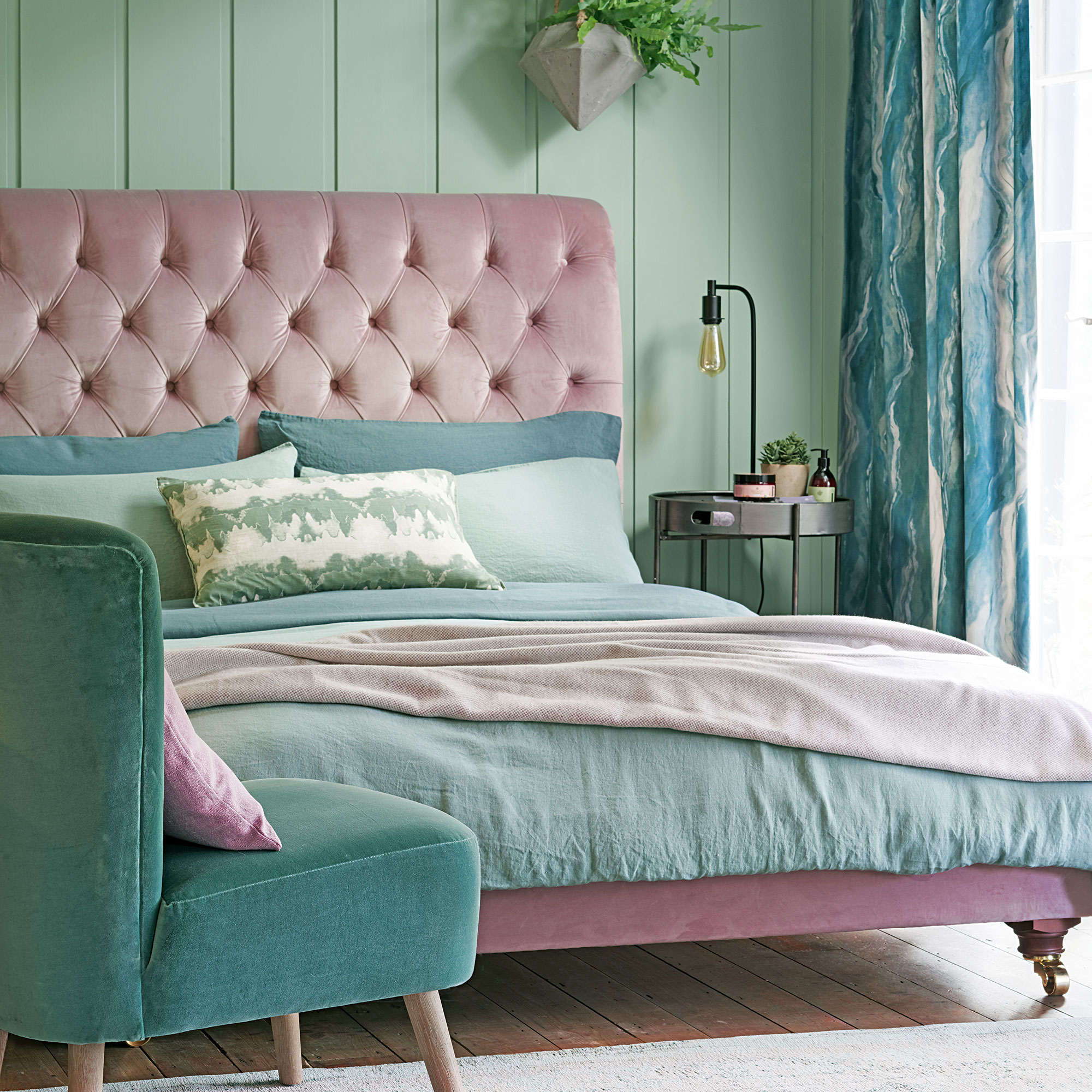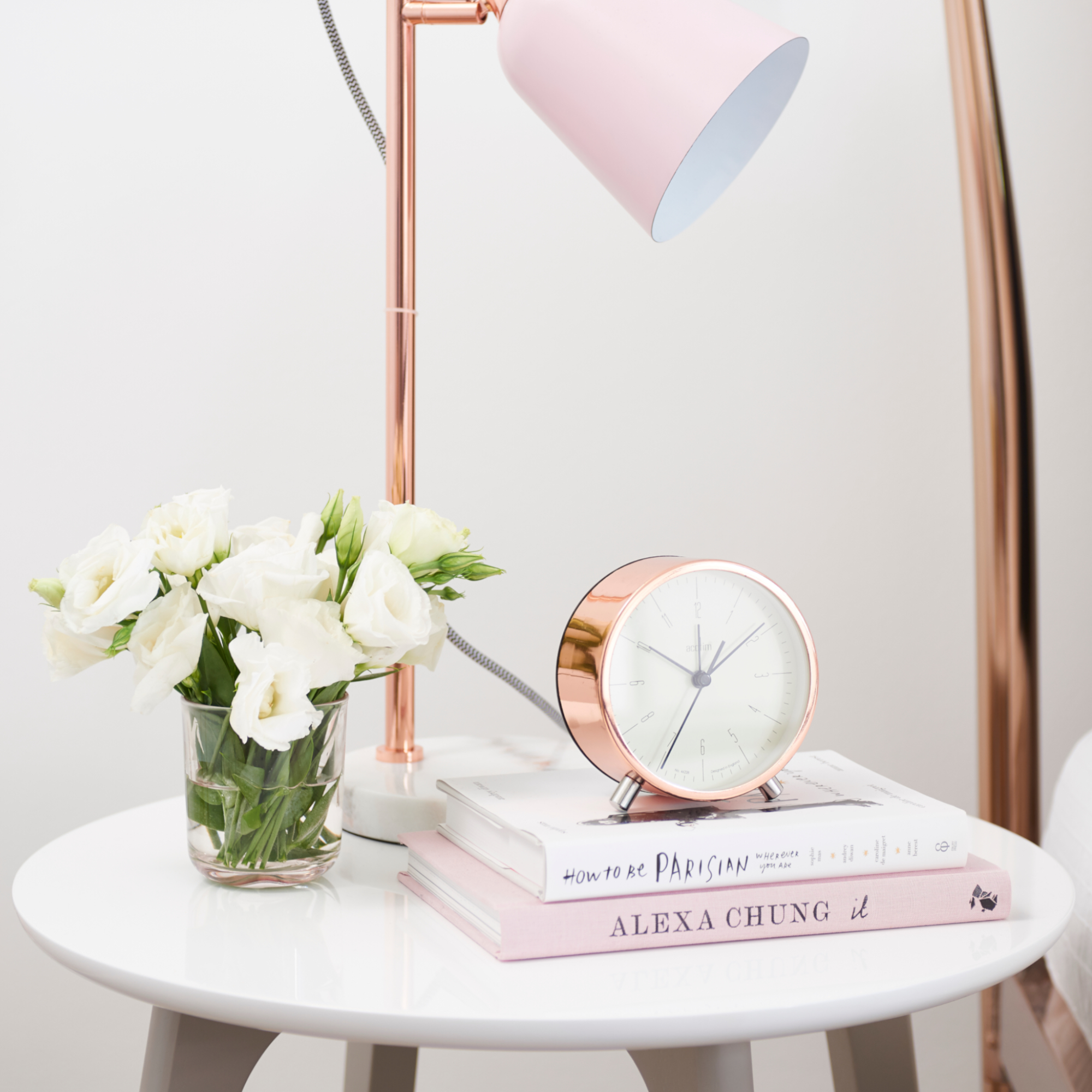
Scared of things that go bump in the night? Well we'd normally tell you not to worry – unless the 'thing' in question is your mattress. Because if your bed is feeling less like a cloud and more like a rollercoaster, you're likely a victim of poor motion isolation. And you might be losing a frightening amount of sleep because of it.
All too often when we're shopping for the best mattress to suit out needs, we'll focus on key features like comfort, support, durability and cost. But for those who share a bed, either with a partner, a pet, or even children, motion isolation can significantly impact the quality of our sleep. That's why it's so important to understand what it is and consider it when you're choosing a mattress.
That said, good motion isolation will impact some people more than others. If you sleep alone, it will only really affect you if you suffer severe motion sickness. 'If you or your partner are light sleepers or have different sleep schedules, investing in a mattress with good motion isolation is going to be crucial,' says Alinta Lim, senior designer at King Living. 'However, if you're both sleepers heavy sleepers or have similar schedules, motion isolation may be less of a concern.'
Here, a raft of bedroom experts explain how to get good motion isolation, the best types of mattress to achieve it, the benefits it can have, and why not considering it can be the ultimate mattress buying mistake.
What is motion isolation in a mattress?
Before we go any further, let's be clear on what motion isolation actually is. 'Motion isolation is the ability to isolate movement across the mattress, so one sleeper does not feel the other sleeper wriggling, moving or turning,' explains Pam Johnson, head of buying at Bensons For Beds.
'It's often described as co-partner disturbance,' adds Dr Robert Oexman, in-house sleep professor for sleep lifestyle brand Sleep.8. 'Specifically this describes disturbance of someone's sleep when their partner moves at night and they are woken up by the feeling of movement from the mattress. The extreme of this was described when free-flow water beds were popular and any movement on the surface caused a “rippling” effect across the mattress.'
'The best way to conceptualise this is to think about putting a glass of water on the left side of the mattress and then sitting on the right side. Your mattress has good motion isolation if the glass of water is entirely unaffected and unmoved by the movement on to the right,' says Fabio Perrotta, director of buying at Dreams. 'If the water were to slosh around or even out of the bowl, the motion isolation is poor.'

Who can benefit from good motion isolation?
As we've said, motion isolation will be more important to some sleepers than it will to others. If you fall into any of the following camps, it's definitely worth further investigation:
1. You or your partner is a light sleeper
If one of you sleeps soundly every night, blissfully unaware of your tossing, turning and perhaps snoring, while the other is constantly disturbed, it can quickly lead to tension... or worse, one of you sleeping in the guest bedroom or on the sofa.
'Motion transfer is often cited as a key trigger for partner disturbance, where one partner moves during the night, causing the other sleeper to wake,' says Pam Johnson. 'This can be particularly challenging for light sleepers and people with any level of insomnia, and can lead to sleep deprivation.'
'This can be very debilitating over a period of time, affecting both your physical and mental well-being,' Pam continues. 'And while there is little the partner who moves can do to reduce their wriggling, having a mattress with good motion isolation can help greatly – with a sound and refreshing nights for both sleepers.'
'Motion isolation can make sharing a bed easier if your partner or pet moves around or gets up and down a lot during the night,' agrees Tommy-Joe Reardon, head of marketing at bamboo bedding specialist Panda London. 'In turn, this can help to prevent a "sleep divorce".'
2. You're on a different schedule to your other half
Another reason to consider motion isolation is if you're on a different schedule to your other half – for example, if one of you always gets up earlier than the other, or one or both of you work shifts. This might also apply if your dog likes to join you in bed early in the morning!
Inevitably, either could wake you up momentarily, or bring you out of important REM (Rapid Eye Movement) stages of sleep – an important part of our nightly sleep cycles, which we experience the most of in the latter half of the night. According to SleepStation, an NHS-endorsed sleep improvement programme, 'not getting enough REM sleep can affect our mood, memory and ability to learn'.

3. You suffer from severe motion sickness
'Some people suffer from motion sickness during the night if they are particularly sensitive to movement,' says Tommy-Joe at Panda. 'Motion isolation prevents this feeling of moving around, allowing for a stillness that translates to feeling much better at the start of the day.'
4. You want to buy once and well
This last point is often not considered, but is worth noting. 'Motion isolation technology typically uses high-quality materials and construction techniques that increase the durability of the mattress,' says Fabio Perrotta. 'By minimising the stress and wear from constant movement, these mattresses can retain their supportive and comfortable properties for a longer time, offering better long-term value.'
What is the best mattress material for motion isolation?

Our bedding experts mostly point to memory foam as being a great material for a mattress that won't move too much in the night.
Made from synthetic, contouring foam, memory foam absorbs disturbances and movement,' says Fabio. 'It is the most effective material for motion isolation as it compresses directly underneath the applied weight, leaving the remaining mattress unaffected. Softer polyfoam is also likely to perform similarly to memory foam by compressing and absorbing movement. However firmer polyfoam risks transferring movement around the mattress,' he warns.
'Memory foam mattresses are renowned for their superior motion isolation. The foam absorbs and contours to the body, significantly reducing the transfer of movement,' agrees Alinta at King Living. 'Hybrid mattresses that combine memory foam with pocketed coils also offer excellent motion isolation, as the individually wrapped coils move independently.'
When it comes to a hybrid mattress that features springs, Pam at Bensons for Beds recommends pocket springs, and 'the more the better'. 'When each sleeper has their own rows of springs, topped with good natural fillings, or with memory foam or latex, this can really aid motion isolation,' she says.
This memory foam mattress is an investment, but our reviewer praised how it dampened any movements from a sleep partner.
This mattress has the longest sleep trial for you to put the motion isolation to the test, which our reviewer called 'excellent'
Our reviewer seriously rated this mattress for its motion isolation and comfort.
A word on zip and link mattresses
'Choosing a zip and link mattress, is a great option for motion isolation,' says Pam. 'A zip and link offers two individual mattresses simply zipped together.' This prevents what's known as 'roll together', where the weight of two people on one mattress causes the springs to compress throughout the centre and cause both occupants to roll towards each other.
'In many instances, you can also select the individual comfort of each side of the mattress to suit the individual sleeper, so they offer a lot of added benefits, too.' These include being able to tailor your mattress support and firmness to suit your individual requirements, and the ability to manoeuvre each part of the mattress separately for turning.
What mattress types might offer poorer motion isolation?
While sprung mattresses can be a sound choice, not all are created equal. 'An open-coil spring mattress tends to have lower spring counts to those of pocket spring mattresses,' says Pam. 'They also typically feature helical wires running across the mattress, linking the two sides of the mattress together, offering poorer motion isolation, so should be avoided.'
'Spring mattresses aren't the best choice if you’re looking to reduce motion transfer,' agrees Chelsea Brown, sales advisor at Opera Beds. 'Movements can cause a ripple effect throughout the coils, no matter how small the movement. If one partner is heavier, the coils can also slant over time, making it even worse. If you would prefer a sprung mattress, ensure you're investing in a high-quality one that won't sag after a few uses.'
How do you test a mattress for motion isolation?

Fabio at Dreams has three tests that he suggests you try if you're shopping for a mattress in store:
1. The body test: For this, you'll need to take another person with you – ideally the person you'll be sharing the bed with. 'Lie down on each side of the bed, while the other moves around, gets in and out of bed, and mimics tossing and turning, note how much movement you can feel,' he says.
2. The water test: You'll need to ask permission before you try this one, but it can be effective. 'Place an object, like a water glass or a small weighted item, on one side of the mattress,' says Fabio. 'Move around on the other side, and watch to see if the object stays stable or if it wobbles or tips over. Minimal movement of the object suggests good motion isolation.'
3. The sensor test: 'Some stores offer to test motion isolation with sensor devices called a seismograph that measures motion waves throughout the mattress,' Fabio explains. Both Dreams and Bensons for Beds have stores with such systems, which also analyse your sleeping position and support needs.
But what if you're shopping for a mattress online? In this case, look for mattresses that offer a sleep trial like Simba and Emma.
How else can you reduce motion transfer in a bed?

Poor motion isolation may be a clear sign you've bought the wrong mattress – but what if you can't afford to replace it? Well there are a few tricks you can try that might ease the symptoms until you're ready to shop for a new one.
1. Upgrade your bed frame
'Ensure your bed frame is sturdy and does not contribute to the transfer of motion,' says Alinta Lim. 'Consider upgrading to a frame with better support and stability, made from a durable material like steel.'
'The bed frame your mattress goes onto is key,' says Pam. 'If this is old, broken or both, it could not only damage your new mattress, but this can cause dips in the mattress, resulting in sleepers rolling together and increased feeling of motion transfer.'
'The type of bed frame can also make a big difference,' adds Chelsea at Opera Beds. 'Bed frames made up of coils will have a similar issue to coil mattresses and can also become squeaky and noisy as they get older. And whilst this may not add to the motion transfer, it’ll certainly add to the sleep difficulty!'
2. Add a mattress topper
'Firstly, check the support of the divan base or bed frame. If this is in good condition and fairly new, then you can consider adding a mattress topper to your existing mattress, which can help,' says Pam.
'The addition of a topper, especially one made from memory foam or latex/gel-type formula, introduces another layer to absorb movement and therefore increases motion isolation,' agrees Fabio.
3. Use separate bedding in the same bed
'Using separate bedding can help minimise the transfer of motion between partners,' says Alinta Lim. Try the Scandi sleep hack of sleeping with two duvets instead of one so that you and your partner can adjust the covers without disturbing each other.
Or try using weighted blankets, which can soothe anxiety for less tossing and turning. They can be particularly good for people with restless leg syndrome, as the added weight may be enough to keep their legs still.

4. Buy a bigger bed
Bed and mattress size can also make a difference.''Going bigger can help,' says Pam. 'In a double ,135cm-wide bed, couples have just 67.5cm each of the bed and movement is more likely to be felt by the other partner. Moving to a bigger king or super-king sized bed reduces the motion transfer and give each sleeper more space for a rested night's sleep. In extreme cases, you could also consider two single beds.'
5. Look to your floor
'If your bed is resting on a hardwood floor, place rugs under the frame in order to act as a softer foundation and offer some shock absorption,' suggests Fabio.
f you still haven't got the message, ignore motion isolation in your mattress at your sleep's peril.







